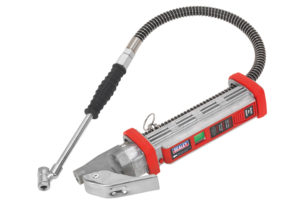A thorough winter servicing schedule can ensure that your customers don’t face any unnecessary ‘fails’ at MOT test time. Neil Kidby, Service Tool Specialist at Sealey, identifies some of the key checks that you should be making.
Statistics show that winter breakdowns are more than double the figures recorded during the warmer summer months. Many of these breakdowns could have been avoided by having the vehicle serviced and/or prepared before the onset of winter, and ensuring some basic checks have been carried out.
Batteries
Winter months are particularly hard on batteries because cold temperatures not only reduce their cranking output, but there are more loads on the electrical system in the form of heated screens and lights being used much more than in the warmer months.
Batteries generally tend to last around five years so if there is any sign of slow starting the battery should be checked and replaced, if required. The Sealey BT102 is a simple to use but effective tool to check a vehicle’s battery condition and also its alternator output.
Vehicle battery terminals should always be kept clean and tight with a coating of an anti- corrosion compound applied to them while the alternator drive belt should also be checked for condition and correct tension and then replaced/re-tensioned as necessary.
Wipers
A good quality antifreeze additive is a vital addition to the car’s screen-washer system. Washer jets should be kept clean and correctly adjusted and the wipers should be checked and replaced, if required. The Sealey VS005 Refractometer is a cost-effective tool which can measure screen-washer and battery fluid strength.
Tyres
Tyre pressures, condition and application are of course vital at any time of the year, and are essential to both steering and braking. But in winter we ask so much more of these items. The new Sealey SA397 Digital Tyre Inflator is an ideal piece of workshop equipment for accurately checking and adjusting tyre pressures.
The legal limit on a car tyre may be 1.6mm of tread, but a tyre with 3mm of tread remaining can give as much as 25% shorter stopping distance in the wet compared to one with 1.6mm of tread. This could, of course, be very significant in an emergency braking situation. Winter tyres also offer increased grip in snow slush or icy conditions, and are becoming increasingly available.
Lights and windscreens
Regularly check that all the lights are working, and the rear reflectors are clean and free from cracks. Additionally, windscreen chips can spread in the cold weather so repairing these before the onset of winter can help prevent a more serious issue (and a potential MOT fail) at a later point.
In the case of winter servicing, prevention is certainly better than cure. Making sure your customers’ car is serviced and well prepared for the winter months should not only provide them with peace of mind but it should also see the car through its next annual inspection.










